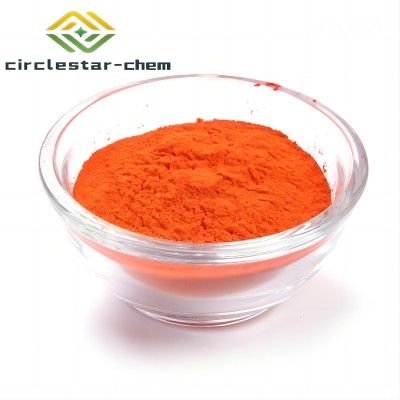
CAS 518-82-1 Emodin
Both rhein and emodin have evident diuretic effect. The urine volume increased to peak two to four hours after dosing, and in the meanwhile the amounts of Na+ and K+ discharges were also reached to the peak. Aloe-emodin and chrysophanol were less effective in diuretic property as compared with rhein and emodin. The mechanism is contributed to the inhibitory effect of rhein and emodin on renal medullary Na+, K+-ATPase. The Na+ re-absorption in renal tubules is mainly active transport which needs energy from ATP hydrolysis catalyzed by the Na+, K+-ATPase. When the enzyme is inhibited, Na+ re-absorption would decrease because of insufficient energy supply, which leads to water discharge increase along with the increase of Na+ discharge. When distal convoluted tubule Na+ increases, promote Na+-K+ exchange would be promoted, resulting in increase in K+ discharge.
Price on request
REQUEST NOWProduct Introduction:
Product Name: Emodin
Synonyms: 1,3,8-TRIHYDROXY-6-METHYL-9-10-ANTHRACENEDIONE;1,3,8-TRIHYDROXY-6-METHYLANTHRAQUINONE;6-METHYL-1,3,8-TRIHYDROXYANTHRAQUINONE;6-METHYL-1,3,8-TRIHYDROXYANTHROQUINONE;9,10-ANTHRACENEDIONE, 1,3,8-TRIHYDROXY-6-METHYL-;emodin from frangula bark;EMODIN, TECH., 90+%;EMODIN, 50% HPLC
CAS: 518-82-1
MF: C15H10O5
MW: 270.24
EINECS: 208-258-8
Product Categories: natural product;Inhibitors;phytochemical;reference standards from Chinese medicinal herbs (TCM).;standardized herbal extract;Frangulic acid;Anthraquinones, Hydroquinones and Quinones;Protein Kinase;Nutritional Ingredients;Aromatics;Intermediates & Fine Chemicals;Pharmaceuticals;chemical reagent;pharmaceutical intermediate;Anthraquinones;Hydroxyanthraquinones;Natural Plant Extract;The group of Polydatin;plant extract;reference substance
form powder
color orange
Related products